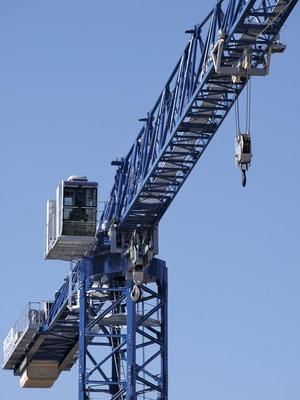
Bans that limit the age of cranes used for construction can have the effect of restricting the importation of worn-out machines but do little to prevent actual crane accidents on the jobsite, according to a forensic engineering firm that studied the issue at the request of a U.S. trade group.
In a 19-page report titled “Tower Crane Lift Expectancy: An Examination of Recent Trends To Establish Age Limits,” Sugar Land, Texas-based Haag Engineering Co.’s crane group concludes that global crane-age bans started out as anti-dumping restrictions disguised as safety laws. They “originated in the Asian Pacific where there had been no prior restrictions on used cranes brought in from various countries,” says the firm in its report.
Regular inspection and maintenance, it concluded, can make a crane of any vintage structurally fit for duty. “Risk assessment should be conducted on a crane-by-crane basis,” Haag continued in the report.
Regulators in Australia, Ontario, California, New York City and other jurisdictions have in the past decade considered crane-age limits, and such proposals often reference similar regulations that Singapore enacted in October 2006. However, Haag, which studied the issue for the Centerville, Va.-based Specialized Carriers & Rigging Association, found that Singapore’s ban “has no scientific basis or engineering foundation.”
Singapore’s limitation “is applicable strictly to older tower cranes being brought into the country and cranes whose historical use and maintenance records are inadequate and cannot prove the cranes have been inspected properly on a periodic basis,” Haag noted in the Jan. 5 report.
As recently as May 2012, the Crane Industry Council of Australia admitted that the country had become a “dumping ground” for cranes that passed their economic lives in Asia and other parts of the world. It recommended more stringent inspection procedures and verification of maintenance history for cranes.
California regulators in 2007 denied an engineer’s request to impose crane-age limits, noting that existing regulations and standards were sufficient to ensure cranes were operating safety in the state. Ontario has considered a similar proposal since May 2013. Later that year, New York City’s Dept. of Buildings in December 2013 proposed a crane-age ban that would limit the use of cranes more than 25 years old and require owners of all cranes to equip units with load-cycle counters.
For its review, Haag delved into its database of more than 800 crane accidents it has investigated since the 1980s. Of the 125 cases where the crane’s age could be identified, Haag found that ages ranged from zero to 92 years with an average age of 16.9 years and a median age of 14 years.
“A total of 78.4% of the cranes involved in incidents were less than 25 years old, and we found no discernible pattern to indicate calendar age of the cranes was a contributing factor,” says the report. Haag suggests that proper maintenance—not age—contributes to a crane's physical fitness.
“We did identify several accidents associated with condition of the crane, although the circumstances had resulted from severe abuse or neglect, including one that had only two annual inspections in 15 years and little or no maintenance,” the report explains.
Regular inspections that can catch early warning signs of failure also were found to be needed for safe crane use. Haag notes that the latest U.S. tower crane standard, ASME B30.3-2012, now requires owners to conduct a “major” inspection of critical crane components every five years. Previous versions of the standard did not include a major inspection.
Finally, the report says that construction supervisors should check that cranes have been inspected and maintained before they put the machines to work.
“Site supervision is required to confirm that all cranes brought onto a construction site have undergone current inspection requirements,” Haag says.



Post a comment to this article
Report Abusive Comment